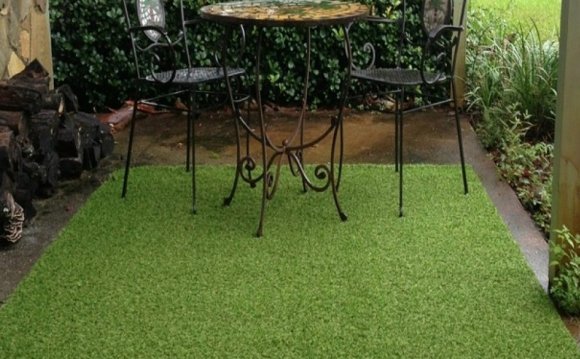
![]() Outdoor play areas are an important feature in homes frequented by children who need ample opportunities to be active and spend time outdoors in the fresh air.
Outdoor play areas are an important feature in homes frequented by children who need ample opportunities to be active and spend time outdoors in the fresh air.
Most single-family homes have a natural grass lawn in the front yard, backyard or both, but choosing synthetic turf for low- and high-traffic areas is a growing trend.
As the popularity of artificial turf increases, more parents and childcare providers are seeking information to help them determine if natural grass or fake grass is the safest option for use in their landscaping.
Many have heard alarming stories of lead exposure from synthetic turf or may be aware of the national debate that continues to plague the National Football League (NFL) as some players lobby for natural grass, while others are proponents of artificial field surfaces.
At the same time, fans of fake grass rightfully point out that children are often exposed to toxic chemicals left behind by pesticides and herbicides when playing on natural lawns.
The uneven surface of most conventional lawns can also pose a tripping hazard for both children and adults; however, some advocates of traditional grass believe the potential for injury is greater with fake turf.
As is often the case when comparing products, the answer to which option is safer depends on a number of factors, the most important of which is the particular artificial grass product you are comparing to conventional grass.
The safety of either option is also strongly influenced by the installation process and the experience of the installer.
For example, either choice could lead to significant tripping hazards if installed incorrectly or if the installer takes too many shortcuts, such as skipping the important step of leveling the ground before installing sod or sculpting the sub-surface correctly before installing artificial turf.
To help you determine which option is best for you, this article addresses a variety of questions about which is safer for areas where children play.
This includes whether or not artificial grass could increase your child’s exposure to lead or other toxins, which option requires more harmful chemicals for ongoing maintenance, which has the highest potential for injuries during play, and how you can ensure your lawn and other play areas are as safe as possible.
Does Artificial Grass Contain Lead?
Let’s start with the question that is most likely your greatest concern when considering turf for your home: Will it increase lead exposure?
This is a great question to ask, since lead exposure has been linked to cognitive impairment, behavioral issues, nerve function impairment, colic, peripheral neuropathy and an array of worrisome symptoms.
Rumors of lead exposure from artificial turf are not completely unfounded, but it is very important to recognize that this lead scare came from studies conducted on older turf manufactured and installed prior to agreements that are now in place that strictly limit the amount of lead allowed in turf.
Parents were not the only people concerned about high levels of lead found in some old manufactured grasses; the Center for Environmental Health (CEH) came together with the major manufacturers of turf in 2008 to put in place agreements to ensure that this health hazard would no longer be a concern.
The synthetic turf products our professional installers use contain no detectable traces of lead or of any other RCRA (Resource Conservation and Recovery Act) hazardous waste heavy metals.
Now, keep in mind that this does not mean that all manufactured turf offered by all companies is free of lead.
While no ethical company would knowingly sell a product with this known health hazard, it is possible that you may encounter a turf company that offers low-quality products that contain lead.
If you choose a trustworthy company with a good reputation that provides grass products with no detectable traces of lead, you will not need to worry about the potential for your children being exposed to high levels of lead while playing on your lawn.
On a side note, if your kids play on artificial turf fields at their school or community sports complexes and you are concerned about the potential for lead exposure, there is something you can do about it.
If you live in California, the first step is to visit the to view the map of sports fields they have tested for lead levels.
The CEH has screened more than 500 such fields in the state and found that most of them are not lead poisoning hazards.
If you do not see the field you are concerned about on the map, the CEH will screen the field at no cost.
All you have to do is send them a sample, and the simple instructions for doing this are available on .
While we are on the topic of potentially hazardous substances, we should also note that fake grass requires no chemical pesticides, fertilizers or herbicides, which are commonly used on natural grass lawns.
Which Option Poses Fewer Tripping and Injury Hazards?
If you are a sports fan, you are probably aware of the ongoing debate about which is the better option for sports fields.















